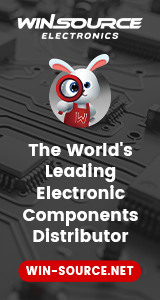Joint Chapter Meeting: Photonic Soldering
Category |
||||||||||||||||||||||||||
Date: |
Thu, May 13, 2021 |
|||||||||||||||||||||||||
Description: |
An online joint chapter meeting will be held on Thursday May 13th at 1pm (PT)/ 3pm (CT)/ 4pm (ET). This is a combined chapter meeting with the following 8 SMTA Chapters: Boston, Capital, Central Texas-Austin, Heartland, Los Angeles/Orange County, Oregon, Puget Sound, Silicon Valley (San Jose). The presentation will explore photonic soldering, which uses high intensity flash lamps as an alternative to laser soldering. DATE: Thursday May 13th, 2021 Non-member fee: $30, SMTA Members: Free You will be sent a link with details for the online meeting. Limited spaces are available so RSVP as soon as possible. Title: Use of flash lamps to achieve non-equilibrium soldering and assembly using conventional solder alloys Presenter: Rudy Ghosh, NovaCentrix Abstract: The drive to enhance human interactivity and reduce weight of electronic systems has led to the use of non-conventional substrates. As the substrates become thinner, more flexible and economical, the thermal stability of the working substrate is significantly lowered. As such, the conventional modes of component attachment are no longer functional. To bridge this gap, anisotropic adhesives and tapes, as well as low temperature solders and conductive epoxies, have been developed. However, in terms of performance, conventional soldering is still the champion. One way to combine traditional soldering techniques with thermally sensitive substrates is laser soldering. However, technical challenges, combined with the high costs of lasers, continue to create barriers to a broader adoption. This discussion focuses on photonic soldering, which uses high intensity flash lamps to overcome the disadvantages of laser soldering; while still enabling soldering on a wide range of substrates. Similar to laser soldering, photonic soldering utilizes selective absorption of light to enable conventional solders to affix commercial packages on the underlying thermally unstable substrate. In this work, we present a comparative study to compare joints created through photonic soldering to joints created in conventional reflow ovens. Parameter space of the photonic soldering space is explored with respect to various soldering alloys and fluxes. Thermal profiles as a function of the photonic soldering parameters and their effect on attaching a variety of components are studied. Cross-sectional SEM and X-ray imaging of solder joints are used to compare the photonic soldering outcomes with the conventional reflow soldering results. Elemental analysis is performed to investigate the effect of photonic soldering parameters on intermetallic formation. Furthermore, photonic soldering as a way to attach conventional surface mount components on thermally unstable substrates is explored. An innovative application for this process lies in the field of wearables. Sensors and actuators attached to commonly used fabrics could enhance health and wellness monitoring as well as packaging and fashion. In this work we showcase TPU as an inlay for wearable applications with a functional circuit built on top. Photonic soldering allows the utilization of these wearables to be stretched, folded, bent and run through washing and drying cycles. Such performance criteria are not feasible with other attachment methods such as adhesive tapes. Bio: Rudy Ghosh is the Technical Program Lead at NovaCentrix, who helps translate technical innovations into customer ready products. He works closely with customers, technology partners, and collaborators to solve technical challenges and identify new avenues for the application of the technology for printed and flexible electronics. He works with the global business team to define and engage in commercial opportunities related to the technical program and furthers those areas of opportunity through industry outreach and engagement. Previously, Rudy was a Post-Doc at the Microelectronics Research Center at the University of Texas at Austin, where he led the Center’s research into the synthesis of 2D materials. He holds a PhD in Physics from the University of North Carolina at Chapel Hill and a MS in Physics from the Indian Institute of Technology, Bombay. He has authored over 30 publications in a variety of technical journals. |
|||||||||||||||||||||||||
Url: |
||||||||||||||||||||||||||
More events from Surface Mount Technology Association (SMTA) |
||||||||||||||||||||||||||
|
||||||||||||||||||||||||||
 »
»
 hitech.gif)





